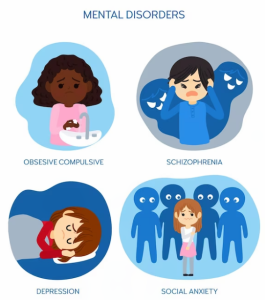Introduction
Seasonal depression, also known as Seasonal Affective Disorder (SAD), is a well-known condition that affects individuals during the winter months when days are shorter, and sunlight is scarce. However, what many people are not aware of is that seasonal depression can also occur in the summer. As the weather warms up and the sun shines brightly, some individuals experience a shift in their mood that negatively impacts their emotional well-being. In this article, we will explore the phenomenon of summer seasonal depression and its underlying causes, symptoms, and coping strategies.
Understanding Seasonal Depression
What is Seasonal Affective Disorder (SAD)?
Seasonal Affective Disorder, commonly referred to as SAD, is a type of depression that follows a seasonal pattern. It typically occurs during the fall and winter months, but it can also manifest in the spring and summer, albeit less frequently.
Prevalence of Seasonal Depression in Winter
Winter SAD is widely recognized and affects a significant portion of the population. It is often linked to the lack of sunlight during the colder months, leading to disturbances in the body’s internal clock and neurotransmitter levels.
Lesser-Known Summer Seasonal Depression
Summer SAD, on the other hand, is less discussed and understood. It is estimated that around 10% of individuals with SAD experience depressive symptoms during the summer months.
Causes of Summer Seasonal Depression
Light Sensitivity
While winter SAD is associated with light deprivation, summer SAD is triggered by increased exposure to sunlight. Individuals with light sensitivity may find the intense brightness overwhelming, leading to mood changes.
Body Image Concerns
As the temperature rises, so does the pressure to achieve the ideal “summer body.” Body image concerns and societal expectations can contribute to feelings of inadequacy and depression during the summer.
Allergies and Heat
For some individuals, summer brings allergies and discomfort due to high temperatures. These physical symptoms can exacerbate feelings of irritability and sadness.
Symptoms of Summer Seasonal Depression
Irritability and Restlessness
Summer SAD may manifest as increased irritability and restlessness, making it challenging to relax and enjoy the season.
Weight and Appetite Changes
Contrary to winter SAD, which often leads to overeating and weight gain, summer SAD may cause a loss of appetite and weight loss.
Sleep Disturbances
Individuals with summer SAD may experience difficulty falling asleep or disrupted sleep patterns, leading to fatigue and daytime sleepiness.
Coping with Summer SAD
Embrace Morning Sunlight
While excessive sunlight can trigger symptoms, moderate exposure in the morning can be beneficial. Take a morning walk or engage in outdoor activities early in the day.
Maintain a Consistent Routine
Establishing a routine can provide a sense of stability and control, which can help alleviate symptoms.
Stay Hydrated and Exercise Regularly
Proper hydration and regular physical activity can boost mood and overall well-being.
Seek Support and Professional Help
Reach out to friends, family, or a mental health professional for support and guidance.
The Role of Nutrition in Summer SAD
Incorporating Mood-Boosting Foods
Certain foods can positively impact mood and alleviate depression symptoms. Focus on a balanced diet rich in fruits, vegetables, and whole grains.
Avoiding Triggers
Limit the consumption of alcohol, caffeine, and sugary foods, as they can exacerbate mood swings.
Unique Challenges of Summer SAD vs. Winter SAD
Social Expectations
Summer is often associated with social events and gatherings. For those with summer SAD, attending these events can be overwhelming and challenging.
Vacation Pressure
The pressure to have a perfect summer vacation can lead to feelings of stress and disappointment.
Balancing Indoor and Outdoor Activities
Finding the right balance between outdoor activities and indoor relaxation is crucial for managing summer SAD.
Recognizing the Signs in Children and Adolescents
Summer SAD can also affect young individuals. Parents and caregivers should be attentive to any changes in behavior or mood during the summer break.
Avoiding Isolation and Building a Support System
Encourage open communication and spend quality time with loved ones to combat feelings of isolation.
When to Seek Professional Help
If symptoms of summer SAD persist or interfere with daily life, seeking professional help is essential for effective management.
Conclusion
While seasonal depression is commonly associated with the winter months, summer seasonal depression is a valid and often overlooked condition. The combination of light sensitivity, body image concerns, and high temperatures can significantly impact an individual’s mental health. By recognizing the signs, adopting coping strategies, and seeking support, individuals with summer SAD can find relief and enjoy the sunny season to its fullest.
FAQs
- Is summer seasonal depression common? Yes, approximately 10% of individuals with Seasonal Affective Disorder experience symptoms during the summer.
- Can sunlight trigger summer SAD? Yes, excessive sunlight can trigger mood changes and irritability in individuals with summer SAD.
- How can I cope with summer SAD? Embrace morning sunlight, maintain a routine, exercise regularly, and seek support from friends and professionals.
- Are children susceptible to summer SAD? Yes, summer SAD can also affect children and adolescents.
- When should I seek professional help for summer SAD? If symptoms persist and interfere with daily life, it is essential to seek professional help for effective management.



